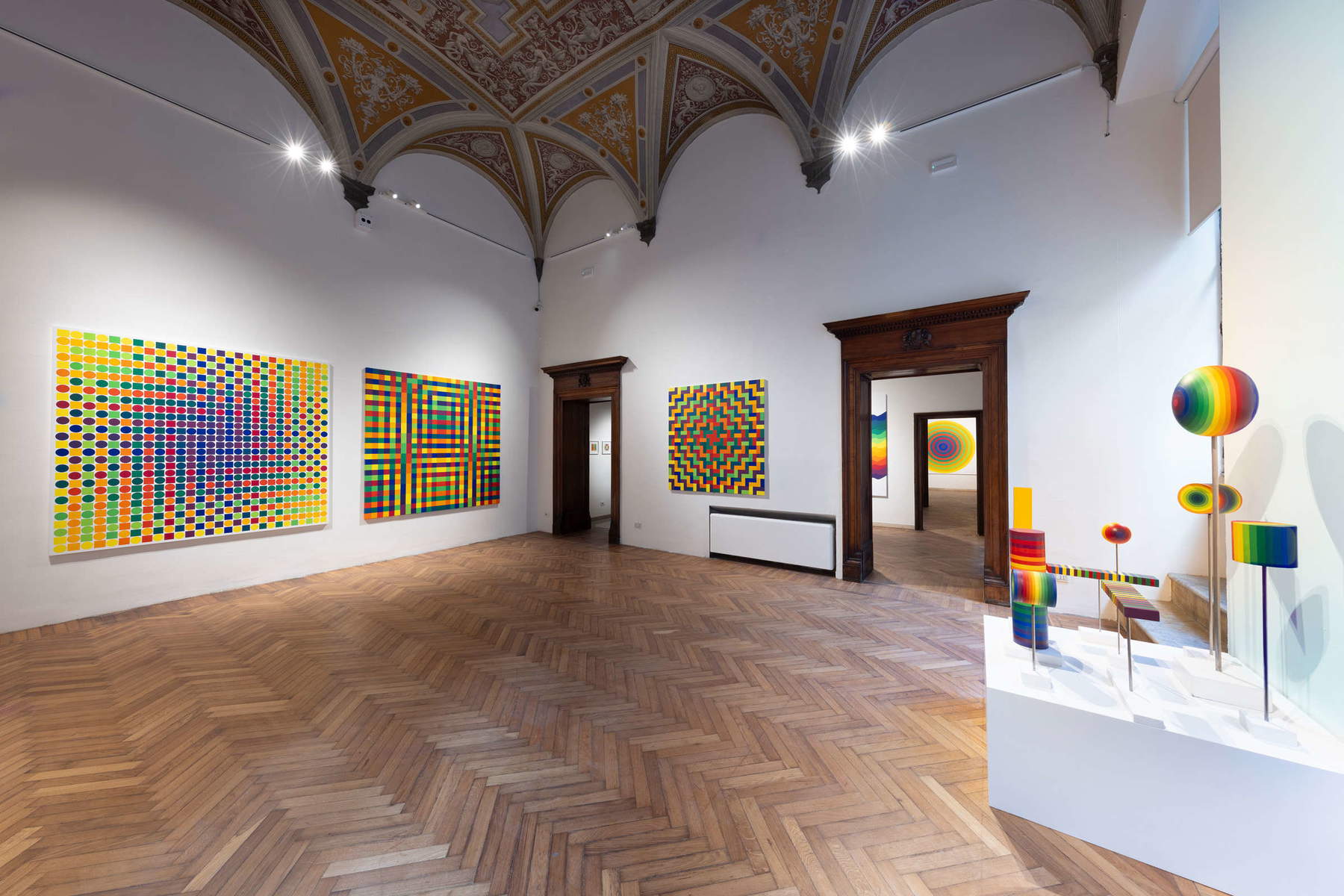Siena ’s Palazzo delle Papesse reopens to the public after more than 15 years with a major exhibition dedicated to Julio Le Parc, one of the leading exponents ofkinetic andOp Art. From September 13, 2024 to March 16, 2025, the exhibition, titled Julio Le Parc. The Discovery of Perception, represents the Argentine artist’s most important solo exhibition ever held in Italy, after the Grand Prize he received at the 1966 Venice Biennale.
The exhibition, produced by Opera Laboratori with the support of Galleria Continua and curated by Marcella Beccaria, in collaboration with Le Parc and the artistic director of his studio, Yamil Le Parc, is housed in the historic rooms of the 15th-century Palazzo delle Papesse, a building rich in history that has welcomed illustrious guests, including Pope Pius II and Galileo Galilei. Le Parc’s works, celebrated for their use of light, movement and geometric forms, have been placed in dialogue with the architecture and frescoes of the palace. The exhibition is divided into a series of themes chronicling Le Parc’s artistic evolution, with works coming directly from his studio in Cachan, France. Prominent among them is Sphere Verte (2016), a suspended work that welcomes visitors at the palace’s entrance, altering the space with its unstable geometry made of green Plexiglas tiles.
A precursor of kinetic art and Op Art, Julio Le Parc has been experimenting with light and movement since his early days. As early as 1959, during his first years in Paris, Le Parc inserted electric lights into small boxes, using prisms and Plexiglas sheets to create plays of colored light beams. “The experiments in light and movement,” he wrote in 1971, “were part of my desire to move away from the notion of a fixed, stable, definitive work.” The exhibition includes key works from this period, including landmark pieces such as Continuel lumière mobile (1963-2013), Continuel lumière boite no. 3 (1959-1965) and Continuel lumière avec quatre formes en contorsion (1966-2012). These works explore the relationship between light and movement in different ways, always stimulating new reactions in the audience, and represent a constant quest toward immersion in the visual experience, pushing into the fourth dimension.


The Argentine artist also defined a spectrum of 14 pure colors, using them as the basis for his pictorial research. These colors, resembling fragments of a rainbow, create new, constantly evolving geometries. The color variations in Le Parc’s paintings, as in Ondes 139 série 47 No. 8 (1974) and Ondes Alternées à partir d’un thème de 1972 (1972-2018), fill the rooms of an ancient 15th-century palace, defying the boundaries of the canvas. The works exhibited at Palazzo delle Papesse, such as Série 14 - 14 Permuté (1970-2020) and Série 15 No. 8 (1971-2012), capture attention with their concentric and vibrant circles, inviting the viewer to experience the work at different distances.
In the 1970s, Le Parc also translated his chromatic quest into the sculptures of the Ensemble volume-couleur series, a selection of which dated 1971-1975 is included in the exhibition. These are painted wood sculptures mounted on metal rods that evoke miniature architectural projects, foreshadowing monumental works for future cities and anticipating his public sculptures of the 1980s. Finally, the exhibition presents works from the recent Alchimie series, large canvases that testify to Le Parc’s ongoing artistic exploration and his ability to open himself up to new creative possibilities.
Palazzo delle Papesse, with its courtyard, terrace and spectacular view of Siena from therooftop, becomes a place of visual immersion and perceptual experimentation, in keeping with Le Parc’s philosophy. The exhibition experience is enriched by the presence of a bistro, bookstore and inclusive educational offerings, thanks to the Papesse Lab project.
A number of sponsors have contributed to support the cultural initiative, namely Estra, Terre Cablate, Lavazza, iGuzzini, Pedrali and the Consorzio del Vino Brunello di Montalcino. To make art accessible to all, Opera Laboratori introduced the “card of the curious,” a card that offers discounts on merchandising, cafeteria drinks and educational workshops.
 |
| Palazzo delle Papesse reopens after years of closure, with Julio Le Parc exhibition |
Warning: the translation into English of the original Italian article was created using automatic tools. We undertake to review all articles, but we do not guarantee the total absence of inaccuracies in the translation due to the program. You can find the original by clicking on the ITA button. If you find any mistake,please contact us.